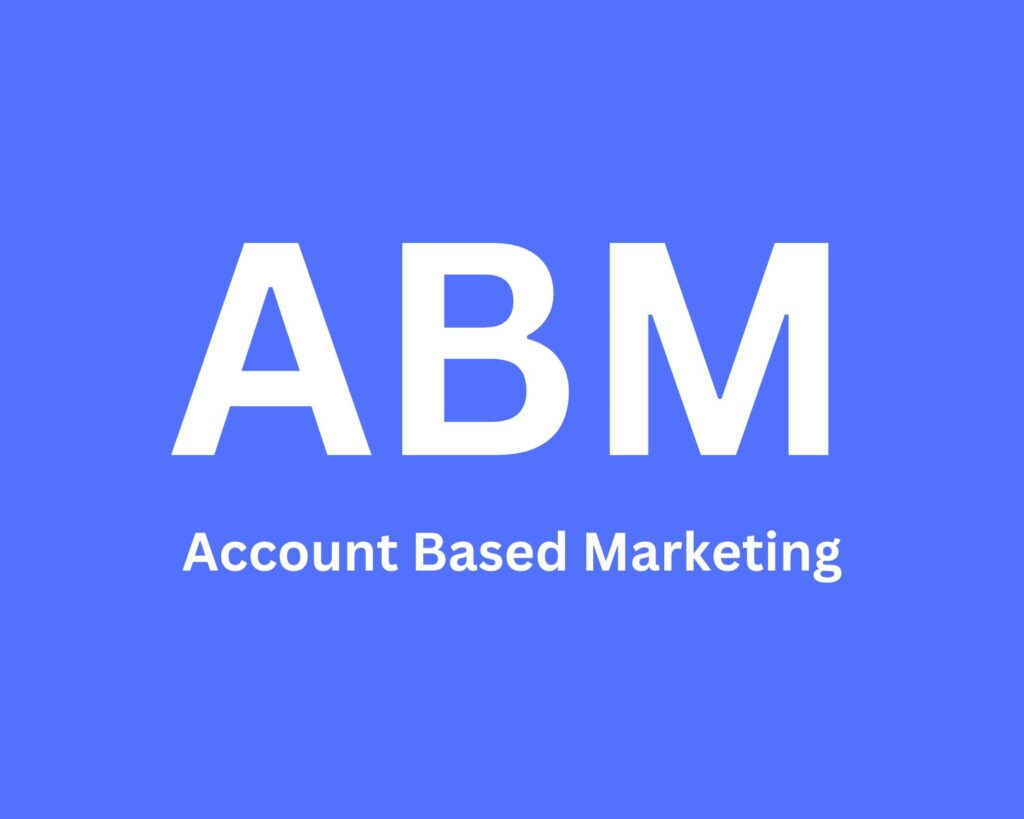ABM has emerged as a game-changing approach that enables SaaS companies to connect with the right audience and achieve remarkable results. In this article, we will delve into the key benefits of ABM, explore practical implementation strategies, address challenges and pitfalls, discuss future trends, and offer actionable insights for your SaaS business. Let’s embark on this journey to uncover how ABM strategies can drive success for SaaS companies.
Understanding the Challenges of SaaS Marketing
The Unique Challenges of SaaS Marketing
Marketing SaaS products comes with its own set of challenges. SaaS companies often face intense competition, a crowded marketplace, and the need to differentiate themselves from similar offerings. Additionally, the target audience for SaaS solutions can vary widely in terms of industry, company size, and specific pain points. This complexity makes it challenging to create a one-size-fits-all marketing approach.
The Need for Targeted and Personalized Approaches
To effectively address these challenges, SaaS companies require targeted and personalized approaches that resonate with their ideal customers. Mass marketing techniques are no longer sufficient to capture the attention of the right prospects. Instead, a more precise and tailored approach is necessary to stand out from the competition and drive meaningful engagement.
How ABM Aligns with SaaS Marketing Needs
This is where ABM shines. ABM is a strategic approach that focuses on identifying high-value target accounts and creating personalized experiences to engage them. It allows SaaS companies to align their marketing campaigns with the specific needs of their ideal customers. By tailoring messages and content to resonate with the target accounts’ pain points and challenges, SaaS companies can establish meaningful connections, build trust, and increase the likelihood of conversion. ABM enables marketing and sales teams to collaborate closely, resulting in higher conversion rates, improved customer experience, and increased revenue.
Key Benefits of ABM for SaaS Companies
1. Targeted Approach
ABM enables SaaS companies to identify and prioritize high-value accounts that align with their ideal customer profiles (ICPs). By understanding the specific pain points and needs of these accounts, companies can tailor their marketing efforts to deliver relevant and compelling messages. This targeted approach increases the chances of capturing the attention of the right prospects and maximizes the return on marketing investments.
2. Personalization
In the SaaS industry, personalization is a key driver of success. ABM allows companies to create customized experiences for each target account. For example, a project management SaaS company could tailor their messaging to highlight how its solution specifically addresses the project management challenges faced by a target account in the construction industry. By demonstrating a deep understanding of the target account’s needs and providing solutions that are tailored to their unique requirements, SaaS companies can build stronger connections, establish trust, and increase the likelihood of conversion.
3. Enhanced Sales and Marketing Alignment
Traditionally, sales and marketing teams operate in silos, leading to misalignment and missed opportunities. ABM breaks down these barriers by fostering collaboration and alignment between the two departments. For instance, marketing teams can provide sales teams with insights about the specific pain points and interests of target accounts, empowering sales representatives to have more informed and personalized conversations. This collaboration ensures a higher conversion rate, improved customer experience, and increased revenue.
4. Increased Customer Retention
ABM strategies not only focus on acquiring new customers but also on nurturing and retaining existing ones. By creating personalized and relevant experiences for current customers, SaaS companies can strengthen their relationships and reduce churn rates. For example, a customer support SaaS company could provide targeted resources and proactive communication to help customers maximize the value they derive from the software. This customer-centric approach builds loyalty, encourages upsells and cross-sells, and ultimately drives long-term revenue growth.
Implementing ABM Strategies for SaaS Success
Identify Ideal Customer Profiles (ICPs)
To implement ABM effectively, it is crucial to define your Ideal Customer Profiles (ICPs). ICPs represent the characteristics, pain points, and behaviors of your most valuable customers. By conducting thorough market research, analyzing customer data, and understanding the needs of your target market, you can identify the accounts that align best with your business goals and focus your resources accordingly. For example, a CRM SaaS company targeting the healthcare industry may identify hospitals with a high patient volume and complex data management needs as their ideal customers.
Data-driven Insights
Data plays a pivotal role in successful ABM implementation. Analyze customer and prospect data to gain insights into their preferences, behaviors, and pain points. Utilize marketing automation platforms, CRM systems, and other data tools to capture and analyze information effectively. For example, a marketing automation platform can provide data on customer engagement, allowing you to tailor your messaging and content based on their interests. Data-driven insights will guide your decision-making, enhance personalization, and optimize your ABM strategies for better results.
Tailored Messaging and Content
Crafting personalized messages and content is at the heart of ABM’s success. Understand the pain points, challenges, and goals of your target accounts, and align your messaging with their specific needs. Showcase how your SaaS solution addresses its pain points and provides unique value. Utilize case studies, testimonials, and success stories to demonstrate your expertise and build credibility. For example, a marketing analytics SaaS company could tailor its messaging to highlight how its solution helped a similar customer increase their return on investment by 30%. Personalized messaging and content significantly enhance engagement and conversion rates.
Multi-channel Campaigns
Implementing multi-channel ABM campaigns allows you to reach your target accounts through various touchpoints. Utilize channels such as email marketing, social media, content marketing, events, and targeted advertising to engage with your target accounts. Maintain consistency in messaging and branding while customizing the content for each channel’s requirements. For example, a cloud storage SaaS company could use email marketing to provide educational content, social media to share customer success stories, and events to network with potential customers. This multi-channel approach increases your chances of capturing attention and driving meaningful interactions with your target accounts.
Measure and Optimize
To ensure the effectiveness of your ABM strategies, it is crucial to measure and optimize campaign performance continually. Track key performance indicators (KPIs) such as engagement rates, conversion rates, pipeline velocity, and customer lifetime value. Use A/B testing to experiment with different approaches and identify what resonates best with your target accounts. Continuously refine your strategies based on insights and feedback to achieve better results over time. For example, if A/B testing reveals that a particular messaging approach generates higher conversion rates, you can optimize your campaigns by incorporating that messaging across different channels.
Overcoming Challenges and Potential Pitfalls
Addressing Common Challenges
Implementing ABM strategies can present challenges, such as aligning sales and marketing teams, obtaining accurate data, and managing multi-channel campaigns. To overcome these challenges, foster open communication and collaboration between teams, invest in data management tools, and start with small-scale pilots to refine your strategies.
Avoiding Pitfalls
To avoid common pitfalls in ABM implementation, strike the right balance between personalization and scalability, regularly reassess your ICPs, and measure campaign performance to optimize your strategies. Be cautious of over-personalization, neglecting the broader market, and failing to track and analyze campaign results.
Future Trends and Innovations in ABM for SaaS
The future of ABM in the SaaS industry is shaped by emerging trends. Integration of artificial intelligence (AI) and machine learning (ML) will enable enhanced personalization and predictive analytics. The utilization of intent data and intent signals will gain prominence in targeting high-value accounts. Integration with marketing automation and CRM platforms will streamline ABM execution and measurement.
To stay ahead, SaaS companies must embrace new technologies that enhance personalization, improve data analysis, and streamline campaign execution. Adapt to evolving market dynamics, assess the effectiveness of your ABM strategies, and continuously innovate to maintain a competitive edge.
Final Thought
In conclusion, ABM strategies offer SaaS companies a powerful approach to overcome marketing challenges and drive success. By adopting a targeted and personalized approach, aligning sales and marketing efforts, nurturing existing customers, and leveraging data-driven insights, SaaS companies can achieve higher conversion rates, increased revenue, and improved customer retention. Implementing ABM requires careful planning, continuous optimization, and a customer-centric mindset. Embrace the power of ABM and unlock its potential to propel your SaaS business to new heights of success in the ever-evolving digital landscape.
Uzma is a Professional Content Writer and Certified Digital Marketing Expert





